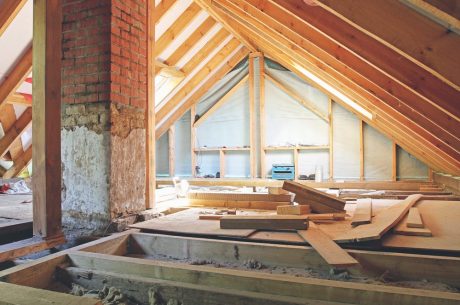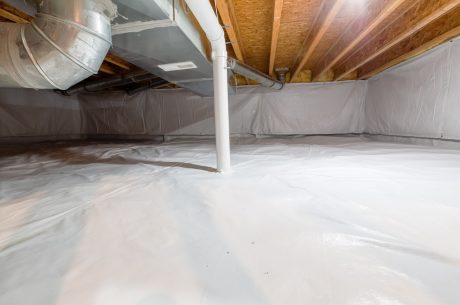Thunderstorms are common in Lafayette, but their potential to cause significant damage to homes is often underestimated. As a homeowner or property manager in Lafayette, it’s crucial to understand the risks of thunderstorms and how to mitigate and repair any damage. In this blog, we’ll explore the dangers of thunderstorms, how they can damage your property, preventative measures you can take, and how to handle repairs effectively.
The Dangers of Thunderstorms
Thunderstorms bring heavy rain, strong winds, lightning, and sometimes hail—all of which can wreak havoc on your home. In Lafayette, these storms are especially prevalent during the warmer months and can cause various types of damage. Understanding these dangers is the first step in protecting your home from the destructive forces of thunderstorms.

Lightning strikes can pose a fire hazard to your home.
How Thunderstorms Can Damage Your Lafayette Property
Roof Damage
Your roof is your home’s first line of defense against thunderstorms. However, heavy rain, wind, and hail can all compromise its integrity. Missing shingles, cracks, and leaks are common issues after a storm. Water can seep through these vulnerabilities, causing further damage to your home’s interior.
Flooding and Water Damage
Flooding is one of the most severe consequences of thunderstorms. Rapidly accumulating rainwater can overwhelm drainage systems, leading to water seepage in basements and ground floors. This water can cause extensive damage to flooring, walls, and personal belongings. Mold growth is another concern, as it can develop within 24-48 hours of water exposure.
Structural Damage
Strong winds and falling debris can cause significant structural damage to your home. Broken windows, damaged doors, and compromised foundations are all potential outcomes. Moreover, if a tree falls onto your property, it can cause extensive damage that requires immediate attention.
Electrical Damage
Lightning strikes can lead to electrical surges that damage appliances, electronics, and electrical systems. This poses a fire risk and can be costly to repair.
What to Do to Prevent Damage from Storms
While you can’t stop a thunderstorm, you can take measures to minimize its impact on your home:
- Roof maintenance. Regularly inspect your roof for missing or damaged shingles and replace them promptly. Consider installing impact-resistant shingles to withstand hail.
- Gutter cleaning. Ensure your gutters and downspouts are clear of debris to facilitate proper drainage and prevent water from pooling around your home.
- Tree trimming. Trim branches and remove dead trees near your home to reduce the risk of them falling during a storm.
- Window protection. Install storm shutters or use plywood to protect your windows from flying debris.
- Sump pump installation. A sump pump can help keep your basement dry by pumping out excess water.
- Surge protectors. Use surge protectors to safeguard your electrical appliances and systems from lightning-induced power surges.
- Check your insurance. Many homeowners policies don’t cover flood damage, so it’s essential to thoroughly understand what’s covered and what’s not. The National Flood Insurance Program (NFIP), managed by FEMA, is an excellent option for flood insurance.

Trimming trees that are close to the house can reduce the risk of roof damage.
How to Repair Thunderstorm Damage to Your Home
If your home has sustained damage from a thunderstorm, it’s essential to act quickly to prevent further issues:
- Safety first. Ensure your family’s safety and avoid any areas of your home that may be structurally compromised.
- Document the damage. Take photos and videos for insurance purposes.
- Temporary repairs. If it’s safe to do so, make temporary repairs to prevent further damage. This could include covering broken windows or placing tarps over roof damage.
- Contact your insurance company. Report the damage to your insurance company and start the claims process. A company like PuroClean of Lafayette can help assess the damage and maximize your claim savings.
- Professional inspection. Hire professional water damage restoration experts to assess the full extent of the damage and provide repair estimates.

Reporting and documenting damage from thunderstorms is essential to maximizing your insurance claims savings.
When to Call in a Water Remediation Expert
Water damage can be complex to handle, especially if it’s extensive. A general rule of thumb is that the sooner you address water damage, the better your chance of restoring your property. If you notice standing water that’s not subsiding, visible mold growth or a musty odor, or warped floors, walls, or ceilings, it’s better to leave the repair work up to the professionals. This is especially true if any household members are experiencing allergies or respiratory issues from mold.
Contact PuroClean of Lafayette, Your Go-To Water Damage Restoration Experts!
When thunderstorms cause property damage, PuroClean of Lafayette is here to help. Our team of certified professionals specializes in top-notch water damage restoration. We offer comprehensive services, including water extraction and our PuroClean QuickDry System™, to restore your home to its pre-loss condition promptly and effectively. For prompt, top-tier water damage restoration services, please call us today at (765) 701-4242.




 PuroClean of Lafayette
PuroClean of Lafayette